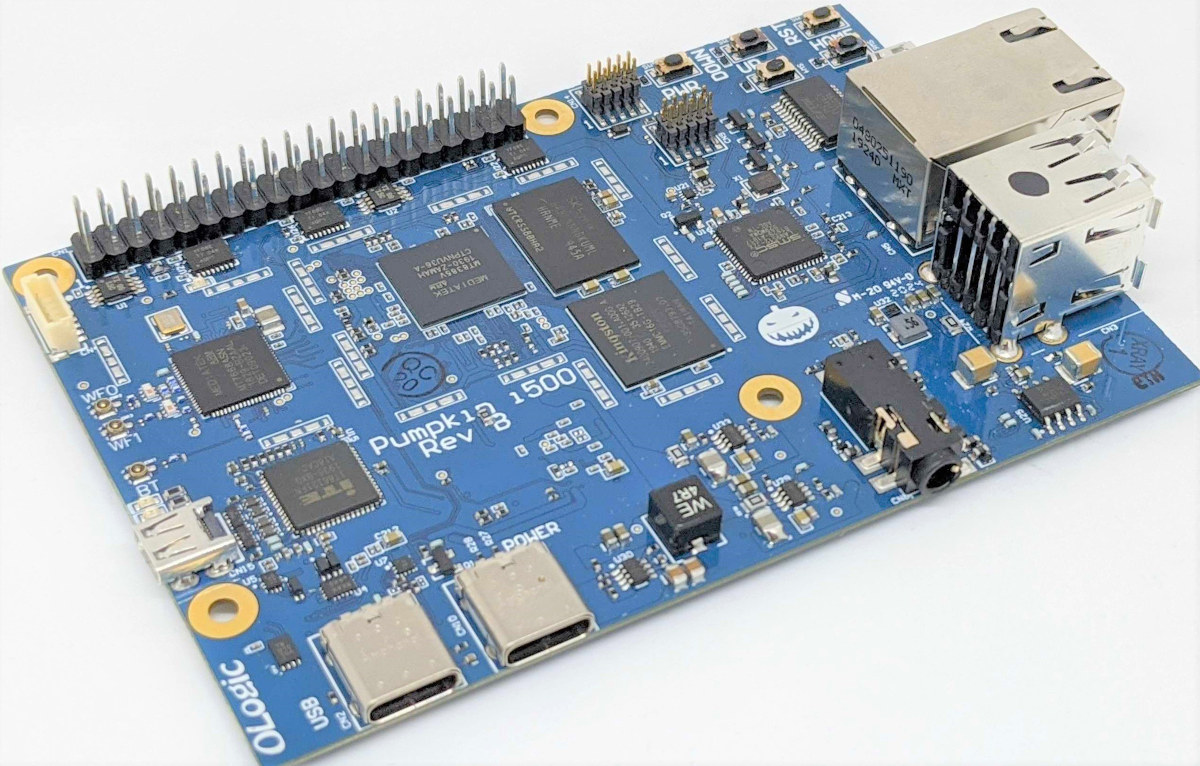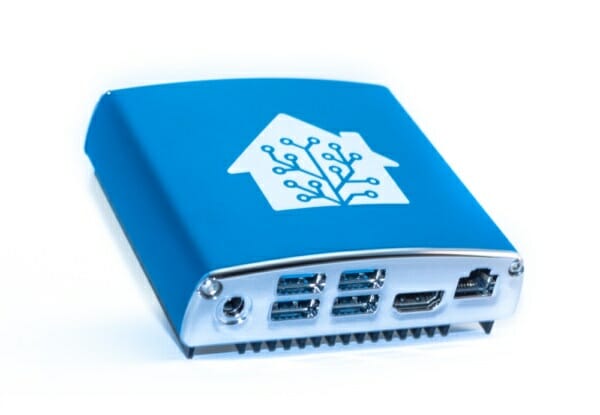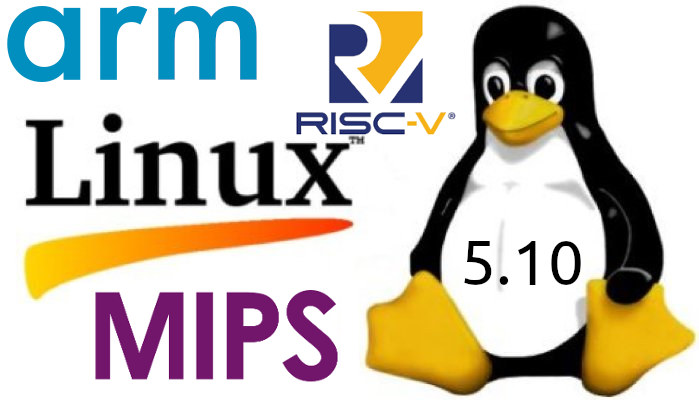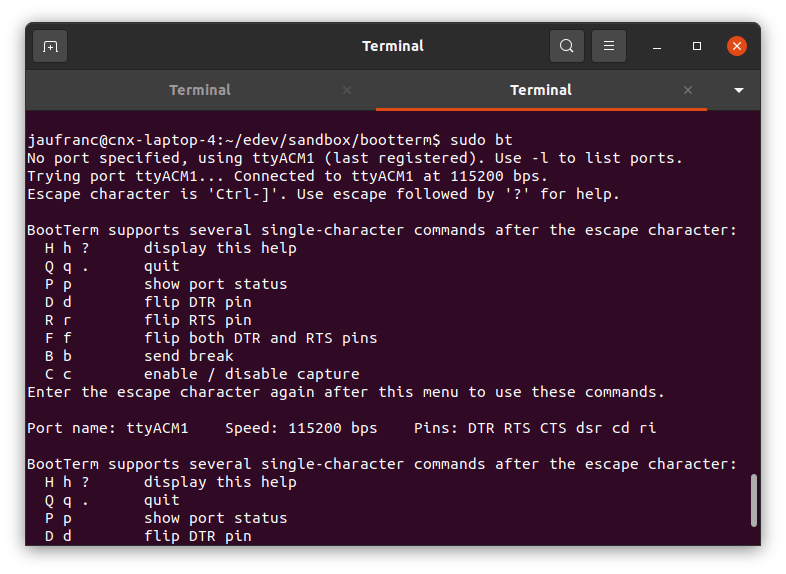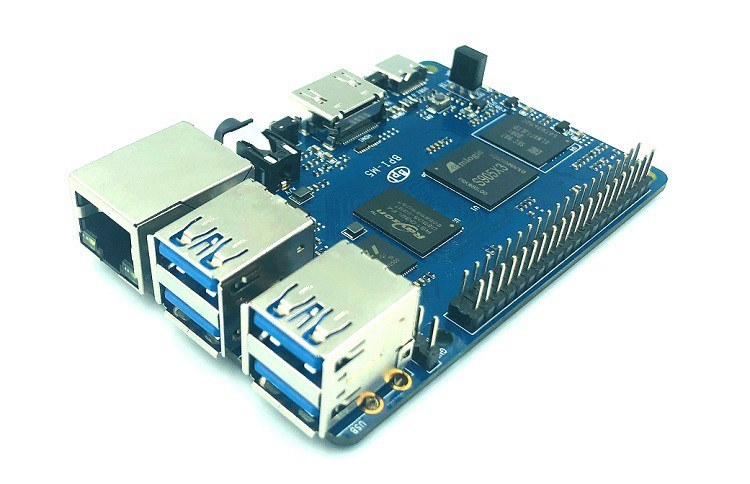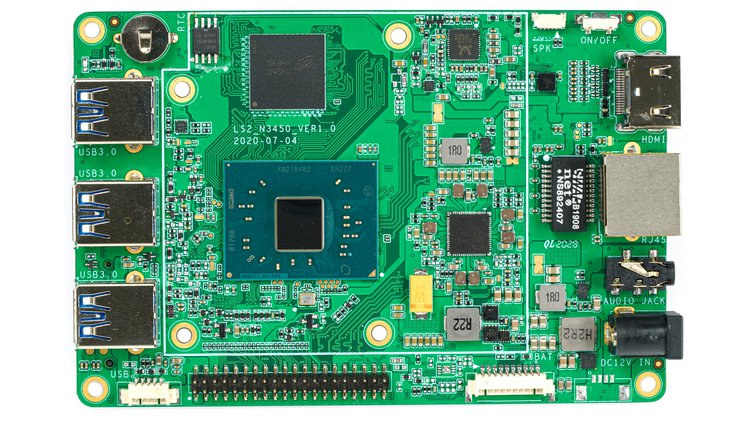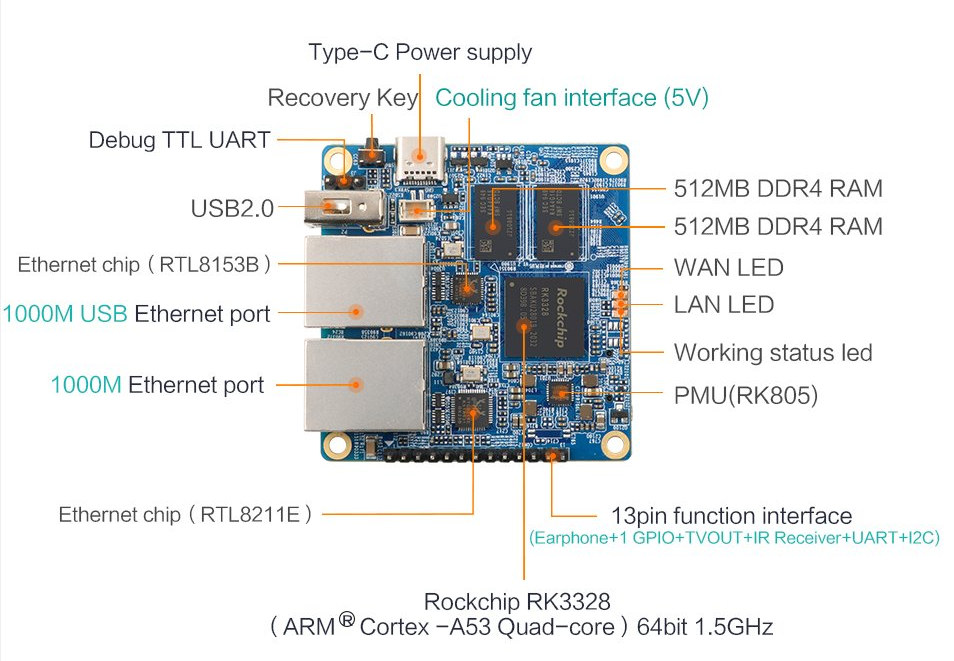MediaTek Rich IoT SDK v20.0 was released at the beginning of the year together with the announcement of Pumpkin i500 SBC with very few details except it would be powered by MediaTek i500 octa-core Cortex-A73/A55 processor and designed to support computer vision and AI Edge Computing. Pumpkin i500 hardware evaluation kit was initially scheduled to launch in February 2020, but it took much longer, and Seeed Studio has only just listed the board for $299.00. We also now know the full specifications for Pumpkin i500 SBC: SoC – MediaTek i500 octa-core processor with four Arm Cortex-A73 cores at up to 2.0 GHz and four Cortex-A53 cores, an Arm Mali-G72 MP3 GPU, and dual-core Tensilica Vision P6 DSP/AI accelerator @ 525 MHz System Memory – 2GB LPDDR4 Storage – 16GB eMMC flash Display – 4-lane MIPI DSI connector Camera – Up to 25MP via MIPI CSI connector Video Decoding – 1080p60 […]
ODROID-Go Super Ubuntu portable gaming console gets a larger 5-inch display
Hardkernel introduced ODROID-Go ESP32-based portable gaming console in 2018. The following year, the Korean company went up the scale with ODROID-Go Advance (aka OGA) running Linux on Rockchip RK3326 quad-core Cortex-A35 processor. We’ve now got a new 2020 announcement with ODROID-Go Super (OGS) with most of the same specifications as OGA, but a larger 5-inch 854×480 display replacing the 3.5-inch 480×320 display, a higher capacity battery, and the addition of a second analog joystick and dedicated volume buttons. ODROID-Go Super (preliminary) specifications: SoC – Rockchip RK3326 quad-core Arm Cortex-A35 processor @ 1.3GHz with Mali-G31 MP2 GPU System Memory – 1GB DDR3L @ 786Mhz, 32 Bits bus width Storage – 16MB SPI Flash for bootloader, push-push Micro SD Card slot (UHS-1 Capable interface) Display – 5-inch 854×480 TFT LCD (MIPI-DSI interface) Audio – 3.5mm earphone stereo jack, 0.5Watt 8Ω Mono speaker USB – 1x USB 2.0 host port Buttons – F1, […]
ODROID-N2+ based “Home Assistant Blue” announced as official hardware for Home Assistant
Home Assistant has announced “Home Assistant Blue” hardware with an enclosure designed by Hahn Werke housing Hardkernel ODROID-N2+ SBC, and software supported by BayLibre who helped upstreaming the code. The goal is to make Home Assistant Blue a fully open-source platform with long-life support. The device was officially announced during the Home Assistant Conference 2020 held a couple of days ago. Home Assistant Blue home automation gateway uses the 4GB DDR4 version of the Amlogic S922X SBC, ships with a 128GB eMMC flash module, and offers Gigabit Ethernet and four USB 3.0 ports. As I understand it, the gateway will run the latest Home Assistant Core 2020.12 that was announced at the conference with a new feature called Blueprints defined as “pre-created automation with user-settable options”, as well as new neural voices for Nabu Casa Cloud TTS (Text-to-Speech), the ability to temporarily disable devices, and more. The release was initially […]
Linux 5.10 LTS release – Main changes, Arm, MIPS and RISC-V architectures
Linus Torvalds has just released Linux 5.10: Ok, here it is – 5.10 is tagged and pushed out. I pretty much always wish that the last week was even calmer than it was, and that’s true here too. There’s a fair amount of fixes in here, including a few last-minute reverts for things that didn’t get fixed, but nothing makes me go “we need another week”. Things look fairly normal. It’s mostly drivers – as it should be – with a smattering of fixes all over: networking, architectures, filesystems, tooling.. The shortlog is appended, and scanning it gives a good idea of what kind of things are there. Nothing that looks scary: most of the patches are very small, and the biggest one is fixing pin mapping definitions for a pincontrol driver. This also obviously means that the merge window for 5.11 will start tomorrow. I already have a couple […]
Bootterm – a developer-friendly serial terminal program
There are plenty of terminal programs to access the serial console from minicom or screen to Putty. But Willy Tarreau was not quite happy with those tools, so he decided to write his own: Bootterm. I was terribly fed up with the current state of serial terminals, which either don’t cope well with errors, or take ages to start, making you lose the first characters, or don’t support non-standard speeds etc. I finally wrote mine to address all that at once, plus support for automatic port detection (the last registered one is the good one by default), waiting for the port to be ready, and also support fixed or timed captures. And a few environment variables make it possible not to type any argument at all yet have the expected behavior. If that’s something of interest to you, you can check it there: https://github.com/wtarreau/bootterm It’s still young (no support for […]
Banana Pi BPI-M5 SBC with 4GB RAM, 16GB flash launched for $53
Last September, we wrote Banana Pi team was working on an Amlogic S905X3 SBC called BPI-M5 and very similar to Hardkernel ODROID-C4 board launched in April 2020. At the time, we noted the Banana Pi BPI-M5 did add a 16GB eMMC flash on-board by default, while ODROID-C4 requires booting from a MicroSD card or a separate eMMC flash module. We also pointed out software and community support is usually much better for the ODROID board, and it was brought to our attention that BPI-M5 board uses 5V voltage only via USB-C, while the Hardkernel board support a wider 5.5V to 17V via a power barrel jack, and this could lead to potential power issue for customer connecting drives to USB 3.0 ports. The good news is that you can now buy Banana Pi BPI-M5 SBC on Aliexpress for $53 plus shipping. Banana Pi BPI-M5 specifications haven’t changed, and we can […]
Hackboard 2 Intel Celeron N4020 SBC comes with optional 4G/5G cellular modem (crowdfunding)
We’ve seen several x86 SBCs made for the makers’ community including AAEON Up Board family, AMD powered UDOO BOLT boards, and Seeed Studio Odyssey-X864105 SBC and mini PC. Hackboard 2 is another one of those single board computers. Powered by a dual-core Intel Celeron N4020 Gemini Lake Refresh processor coupled with 4GB DDR4 RAM and 64GB eMMC flash, the board offers the usual HDMI, Ethernet, USB ports, plus a 40-pin Raspberry Pi header, and an optional 4G or 5G modem. Hackboard 2 specifications: SoC – Intel Celeron N4020 dual-core Gemini Lake Refresh processor @ 1.1 GHz / 2.8 GHz (Turbo) with 4MB cache, Intel UHD graphics 600; 6W TDP System Memory – 4GB DDR4 RAM Storage – 64 GB onboard eMMC flash, 2x NVMe M.2 slots for up to 4 TB additional storage Video output HDMI 2.0a output up to 4K 30-pin eDP connector for 11.6″ to 15.6″ displays 6-pin […]
Orange Pi R1 Plus router SBC features Rockchip RK3328, Dual GbE
FriendlyELEC NanoPi R2S SBC for headless applications with Rockchip RK3328 processor and dual Gigabit Ethernet ports is getting some competition, as with Orange Pi R1 Plus board, Shenzhen Xunlong Software has updated its Orange Pi R1 board powered by an Allwinner H2+ to RK3328 processor coupled with 1GB RAM, and offering dual Gigabit Ethernet ports, plus one USB port for router applications. Orange Pi R1 Plus board specifications with highlights in bold or stricken through showing differences against R1 board: SoC –Rockchip RK3328 quad-core Cortex-A53 @ 1.5 GHz with Arm Mali-450MP2 System Memory – 1GB DDR4 RAM Storage – MicroSD card slot, 16 MB SPI flash Connectivity – 2x Gigabit Ethernet via RTL8211E transceiver and RTL8153B USB 3.0 to Ethernet chip + 802.11 b/g/n WiFi (Realtek RTL8189ETV) with u.FL antenna connector and external antenna USB – 1x USB 2.0 port, 1x USB-C OTG port Expansion headers Unpopulated 26-pin “Raspberry Pi […]


